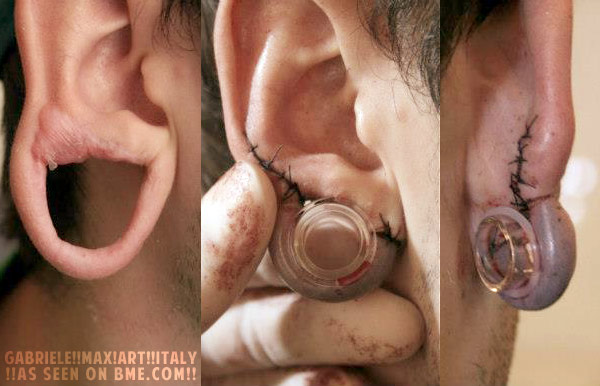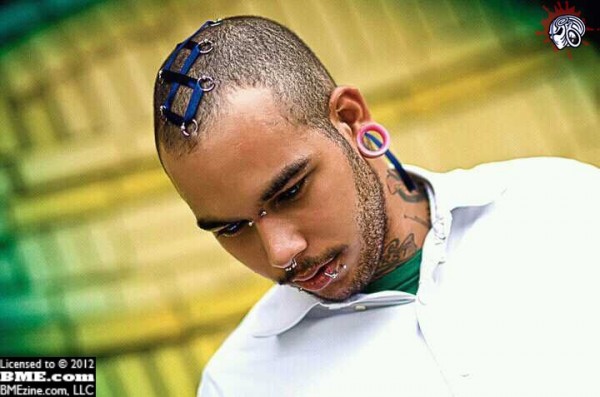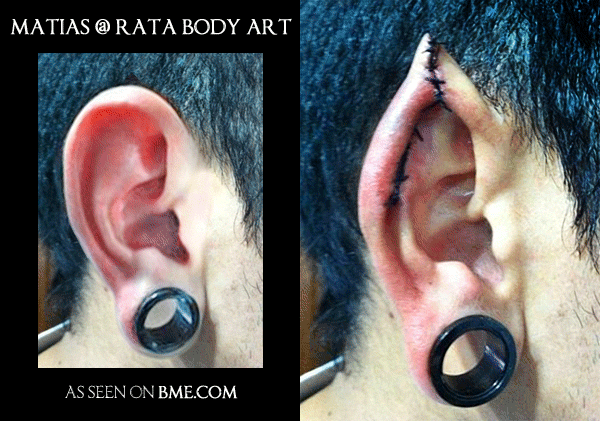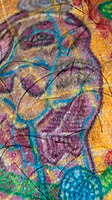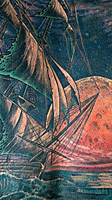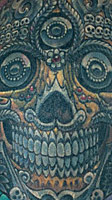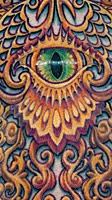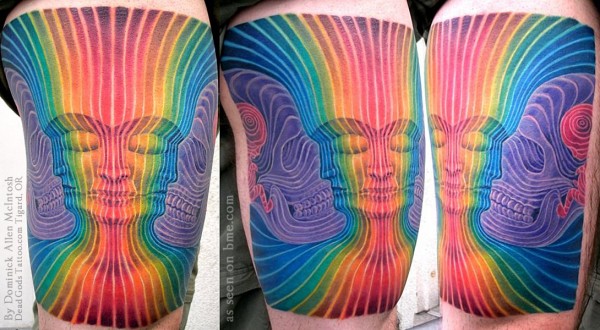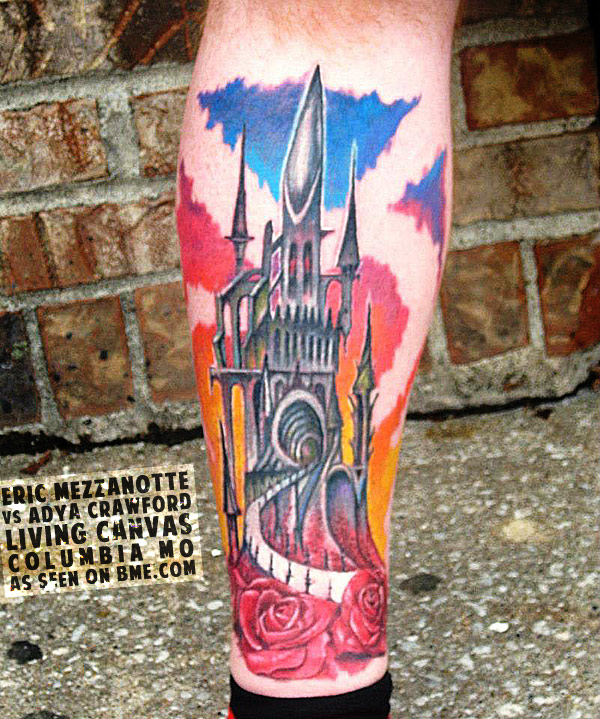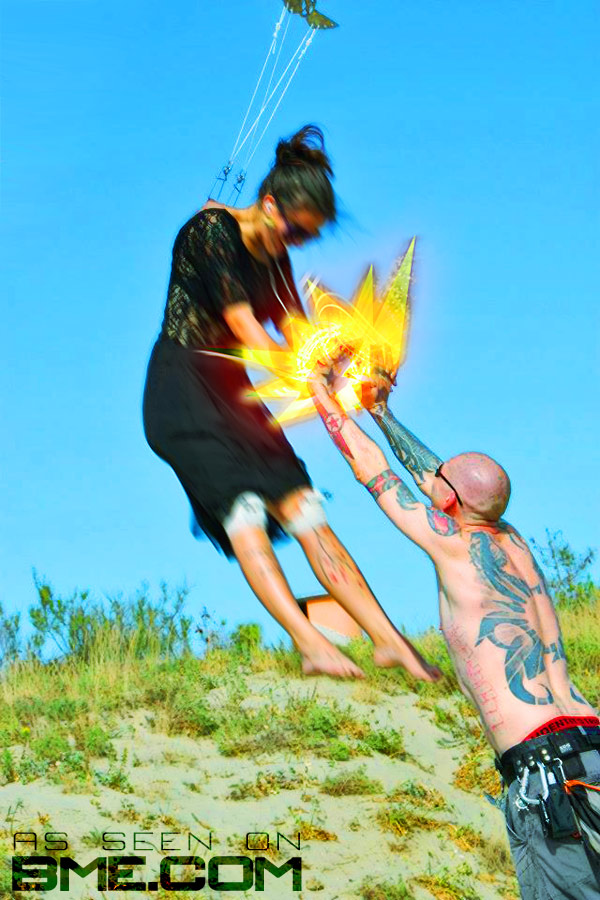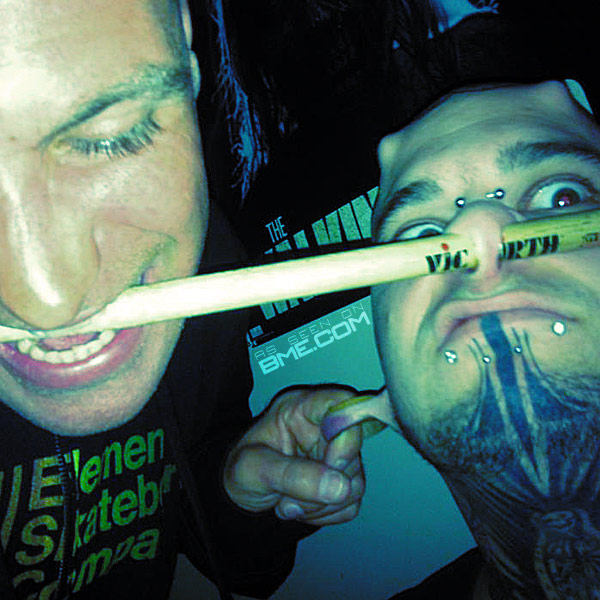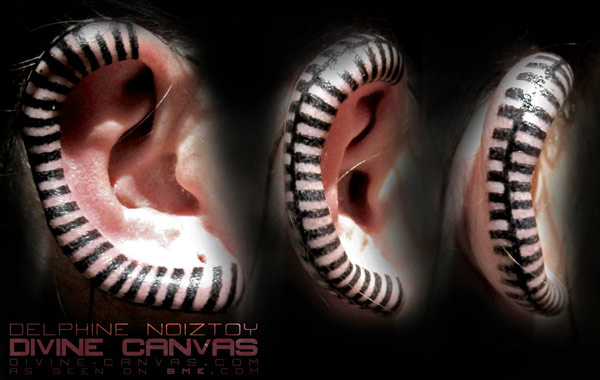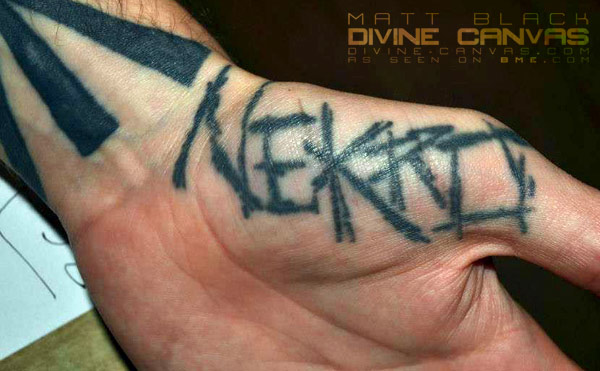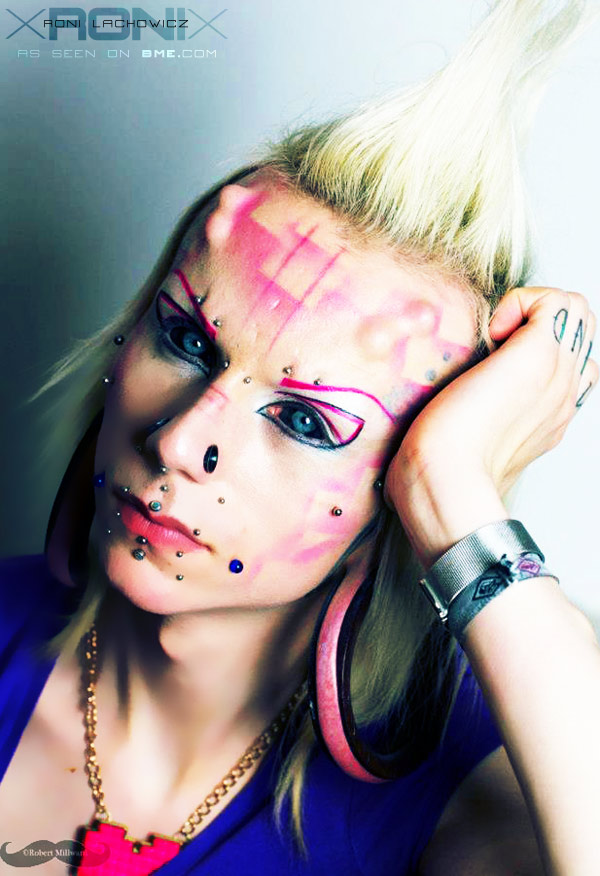Since I seem to be in the mood for posting stuff about ears being chopped up today, let me share another. My friend Gabriele from Max Art Body Piercing in Rome had a client come in that had a large open lobe that had been previously scalpeled (Ludovico’s ears were 2″ last time I remember them) — as you can tell from the distinctive shape, a “U”-loop of flesh hanging down from the ear — and also had a keloid covering a solid area of it’s upper-outside edge that the client wanted excised, complicating the procedure. To make the procedure even more tricky, they wanted to keep the piercing, but alter its shape and reduce its size. To accomplish all of this, Gabriele cut out the body of the keloid and closed the wound, as well as removing part of the lobe “worm” to tighten the ear to the new size. The jewelry used for the healing is glass with silicone o-rings. Glass is an ideal material, but for some people the o-rings can cause irritation (and must be kept clean to avoid a build up of waste — and becoming a home for bacteria), so the client will have to keep an eye on that. The bruising in the third photo went away quickly, the tissue relaxed, and healing is going well so far.
